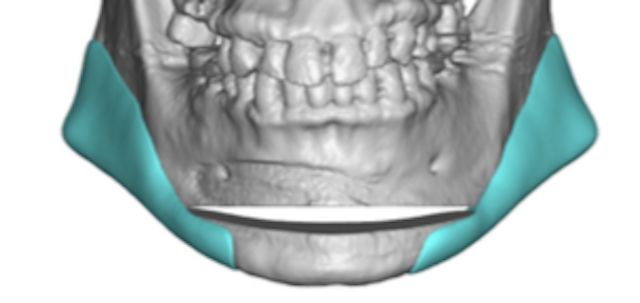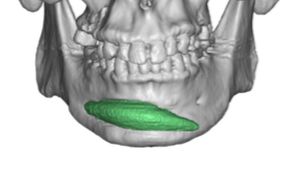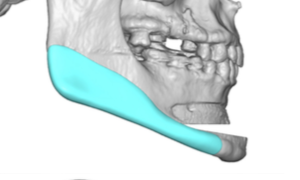Background: The ideal method for total jawline augmentation is a custom designed jawline implant. This works well for most patients but must be approached more cautiously when significant dimensional changes of the chin are desired. Because the enveloping soft tissues of the chin are tightly adherent over a solitary projection bony ‘point’, there are limits as to how much implant volume can be placed and get the soft tissue to close over it without undue tension on the incision.
What the limits of implant volume that can be safely placed in the chin considering soft tissue closure may be different for each patient. But I employ the ‘rule of 12’ as a safe guideline for implant designs which means the combined horizontal and vertical increases in the chin collectively should not exceed 12. In cases of a prior chin implant in good position on the bone this may be stretched to 15 given the soft tissue expansion of the indwelling implant.
To effect a total jawline augmentation effect with an anterior sliding genioplasty, extended custom jaw angle implants can be designed to merge into it along the inferior border. This is an effective total jawline augmentation strategy as it still creates expansion of the entire inferolateral border of the lower jaw.


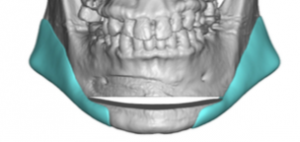

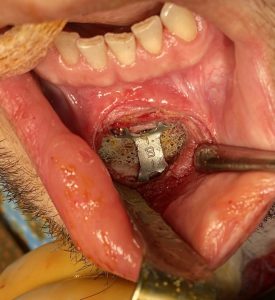

Large implant loads in the chin can be a source of soft tissue stress which lead to wound breakdown and/or infection. A bony genioplasty can stretch out the soft tissues without the risk of tissue stress because the inferior soft tissues remain attached to the bone. The tissue expansion occurs intrabony rather than extrabony as occurs when an implant is placed. The rest of the jawline can then be augmented by a custom implant design that blends into the sliding genioplasty for a total jawline effect. The extended jaw angle implant design also offers the ability to cross over the inferior border notch that always occurs from the bony genioplasty making the entire jawline smooth.
Case Highlights:
1) Significant vertical and horizontal augmentations of the chin are better done with a sliding genioplasty which has a lower risk of potential complications.
2) Custom extended jaw angle implants can be designed to merge into the sides of a sliding genioplasty for a total jawline augmentation effect.
3) The custom extended jaw angle implants can be used to cover over the inferior border notching of the sliding genioplasty.
Dr. Barry Eppley
Indianapolis, Indiana

